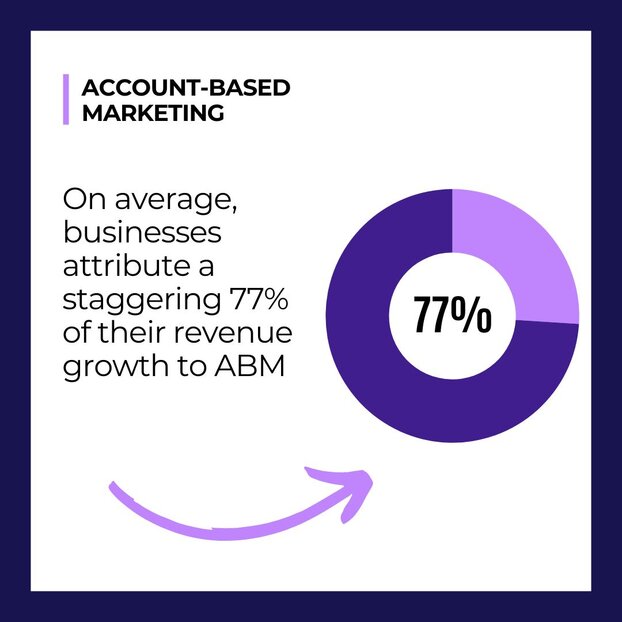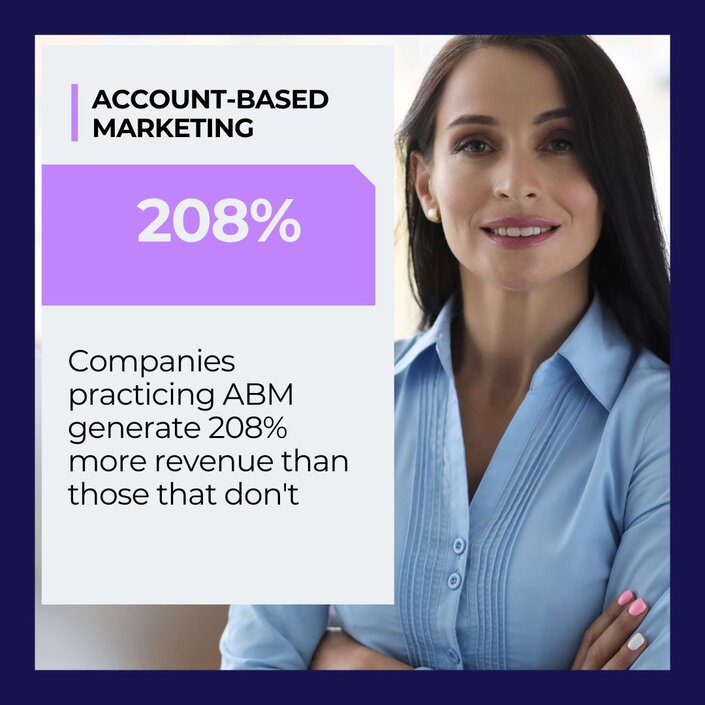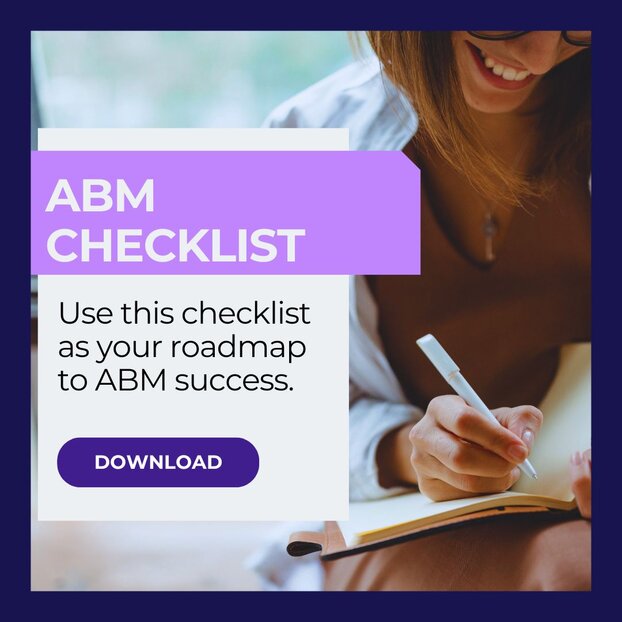Your Account-Based Marketing Blueprint with HubSpot
Precision Marketing
Marketers are vying for a sliver of attention, often relying on broad-stroke strategies that feel a lot like throwing spaghetti at a wall – hoping something sticks. Enter Account-Based Marketing (ABM): a highly-targeted approach that shifts the focus from casting a wide net to narrowing in on quality over quantity. ABM isn’t about reaching everyone; it’s about reaching the right ones – the specific accounts that match your ideal customer profile and hold the potential for a meaningful, long-term relationship.
To appreciate why ABM has become a non-negotiable in the B2B marketing toolkit, it helps to understand the core difference between traditional lead generation and the ABM mindset. Unlike the traditional marketing funnel, which aims to capture as many leads as possible, ABM takes a targeted approach, engaging specific companies with tailored messaging. We’re not here to talk to the masses; we’re here to connect deeply with those select few who matter most.

Why Is ABM So Effective?
ABM doesn’t just gather leads – it builds relationships. Imagine going to your favourite restaurant where the chef not only knows what you like but remembers precisely how you like it prepared. ABM strives to replicate this level of personalisation in B2B, leading to higher engagement and a much greater likelihood of closing deals. Research shows that companies implementing ABM experience a significant increase in revenue – in fact, HubSpot’s research highlights that businesses using ABM are seeing a lift in return on investment compared to more traditional approaches.
The Case for Precision
With ABM, you’re cutting through the noise, communicating directly to key decision-makers within your target accounts. ABM enables you to position your brand as a trusted partner rather than just another vendor, building rapport from the start by addressing the unique challenges and needs of each account.
But for ABM to work its magic, the approach requires the right tools and a structured strategy. That’s where HubSpot comes into play, with its suite of ABM-friendly tools that enable businesses to put personalisation at scale and make every interaction count.
HubSpot’s ABM tools provide everything you need to move from lead generation to account targeting with features designed to help marketing and sales work together. With shared views, targeted content, and powerful reporting, HubSpot takes ABM from a concept to a measurable strategy that helps you navigate the customer journey with laser-focused clarity.
What to Expect from This Guide
In this blog series, we’ll break down exactly how to run an ABM strategy using HubSpot. From building a targeted account list to aligning sales and marketing, to tracking performance – every step will be covered in detail. Think of it as your ultimate ABM blueprint, using HubSpot as the control centre for a campaign that’s more focused, effective, and measurable than traditional marketing could ever hope to be.
Let’s get into the nitty-gritty and see how you can make ABM work for your business, leveraging HubSpot to turn precision targeting into real-world results.

HubSpot and ABM: A Match Made in Marketing Heaven
For years, HubSpot has been synonymous with inbound marketing, offering businesses of all sizes the tools to attract, engage, and delight their customers. But while HubSpot’s traditional funnel approach has worked wonders, it’s also adapted to the world of Account-Based Marketing (ABM), where the focus shifts to highly-targeted account engagement.
HubSpot’s ABM tools are built for precision. At its core, ABM is all about creating deeply personalised experiences for a carefully selected list of high-value accounts. This isn’t your run-of-the-mill approach – it’s about identifying prospects with laser-like focus and engaging them as if they’re your only clients. With HubSpot, you have a suite of tools designed specifically for this level of targeting.
From Inbound to Account-Based: HubSpot’s Evolution
HubSpot initially built its reputation by championing the inbound methodology – pulling in leads with valuable content, nurturing them, and ultimately turning them into customers. While this approach still works, especially for broader audiences, it doesn’t necessarily address the unique needs of high-stakes B2B deals. Enter HubSpot’s ABM features, a game-changer for businesses looking to build long-lasting relationships with specific target accounts.
Now, HubSpot enables marketers and sales teams to collaborate closely, creating unified experiences for each account. Instead of focusing solely on individual leads, you’re working on a broader strategy that touches every part of a target company’s buying team.
Key Features that Make HubSpot Ideal for ABM
HubSpot offers a range of features designed specifically for ABM, from account-level tracking to advanced reporting. Here are some of the standout tools:
Target Accounts Dashboard – The ABM dashboard gives you a clear view of all your target accounts and their engagement levels. This dashboard is your go-to for monitoring where each account is in the buying journey, ensuring no opportunity slips through the cracks.
Account-Based Workflow Automation – With HubSpot’s workflow automation, you can set up custom workflows for each account. This means that when an account reaches a certain stage or meets specific criteria, HubSpot can automatically trigger emails, assign tasks, or move the account to a new stage in the sales funnel. This makes it easy to keep things personalised without missing a beat.
Targeted Content Personalisation – One of the core principles of ABM is personalised engagement. HubSpot lets you set up dynamic content across your website and emails tailored to each account’s unique needs. When a prospect from a target account visits your site, they’re seeing content that speaks directly to their pain points and interests – and that’s a powerful thing.
Seamless Sales and Marketing Alignment – ABM thrives when marketing and sales work hand in hand. With HubSpot, you can easily share insights, track communication, and keep both teams informed. Everyone can see a shared view of each account’s journey, ensuring seamless handoffs and reducing silos.
Why This Matters for Your Business
In a traditional B2B setup, marketing might generate leads and pass them along to sales. But in ABM, the two teams work as a single unit, focused on understanding and meeting the needs of target accounts. HubSpot’s ABM toolkit makes this collaboration not just possible, but intuitive. By syncing up both teams, you’re better positioned to build genuine relationships with high-value clients.
In short, HubSpot has evolved from an inbound marketing powerhouse into a platform that lets you handle ABM with the finesse it requires. It’s no longer about bringing leads into a funnel and hoping they convert; it’s about recognising specific accounts’ needs and engaging them in a meaningful way. And that’s the essence of ABM: connecting deeply, thoughtfully, and strategically.
Account-Based Marketing Framework
Defining Objectives and KPIs
The first step in an ABM strategy is to clearly define your objectives and key performance indicators (KPIs). Objectives could include increasing revenue from key accounts, improving customer retention, or penetrating new market segments. KPIs should be aligned with these objectives and could range from engagement metrics (e.g., email open rates, website visits) to financial metrics (e.g., deal size, revenue growth).
Identifying Target Accounts
Identifying and selecting the right accounts is critical. Use data-driven insights to pinpoint accounts that align with your business goals and have the highest potential for revenue generation. Consider factors such as company size, industry, geographic location, and buying behaviour. In the APAC region, leveraging local market intelligence and cultural nuances can significantly enhance account selection accuracy.
Developing Personalised Content
Content is the backbone of ABM. For each target account or cluster, develop highly personalised content that addresses their specific needs, pain points, and goals. This can include custom landing pages, tailored email campaigns, personalised webinars, and bespoke case studies. Personalisation increases engagement and demonstrates your commitment to understanding and solving the account’s unique challenges.
Aligning Sales and Marketing Efforts
Successful ABM requires seamless collaboration between sales and marketing teams. Both teams should work together to develop account plans, share insights, and align on messaging. Regular meetings and integrated workflows ensure that efforts are coordinated and that accounts receive a consistent experience across touchpoints.
Implementing Multi-Channel Campaigns
An effective ABM strategy leverages multiple channels to engage target accounts. This includes digital channels like email, social media, and paid ads, as well as direct channels like events, webinars, and personalised direct mail. In the APAC region, consider incorporating local social media platforms and regional events to enhance engagement.
Utilising Technology and Tools
ABM platforms and tools play a crucial role in executing and scaling ABM campaigns. To manage and measure campaigns, utilise technologies like CRM systems, marketing automation platforms, and ABM-specific tools. These tools enable data-driven decision-making and provide insights into account engagement and campaign performance.
Measuring and Optimising
Regular measurement and optimisation are essential to ensure the success of ABM campaigns. Track KPIs and analyse the performance of each campaign. Use insights to refine your strategy, improve targeting, and enhance personalisation. Continuous optimisation ensures that your ABM efforts remain effective and deliver maximum ROI.
Turning Precision into Growth with Account-Based Marketing on HubSpot
Account-Based Marketing (ABM) is not just a strategy; it’s a paradigm shift in how we engage, nurture, and convert key accounts. To succeed with ABM, businesses need meticulous planning, seamless collaboration, and sustained engagement that resonates with high-value accounts.
HubSpot’s ABM tools allow you to bring this vision to life, equipping your team to go beyond lead generation and focus on building genuine connections that last.
By understanding the different types of ABM and leveraging HubSpot’s features to tailor your outreach, businesses can craft a strategy that speaks directly to each account’s unique needs. From developing hyper-targeted lists and personalising workflows, to aligning sales and marketing, HubSpot provides the ideal foundation to manage ABM campaigns with precision and insight.

